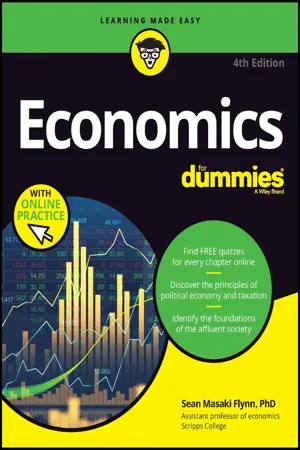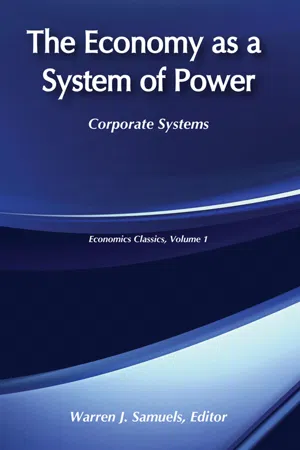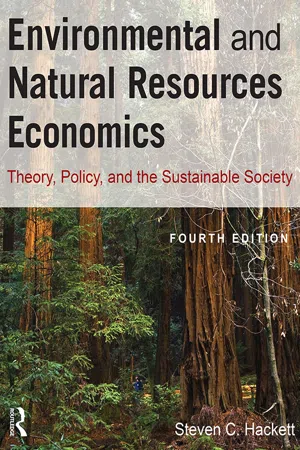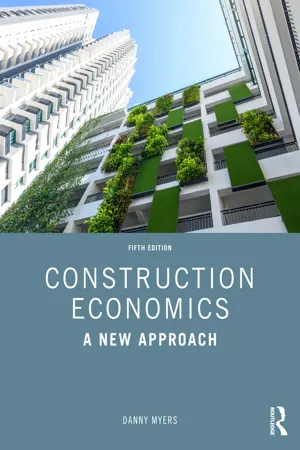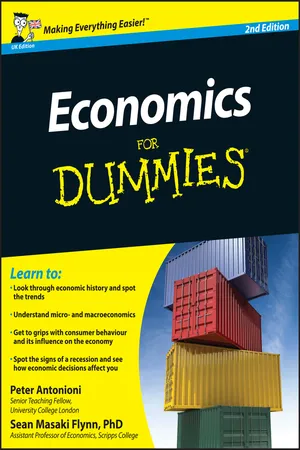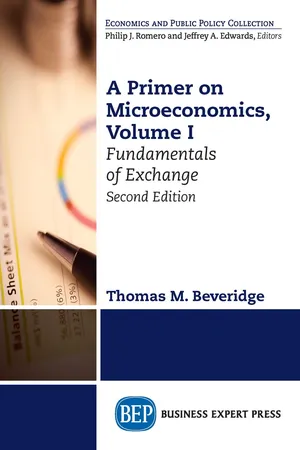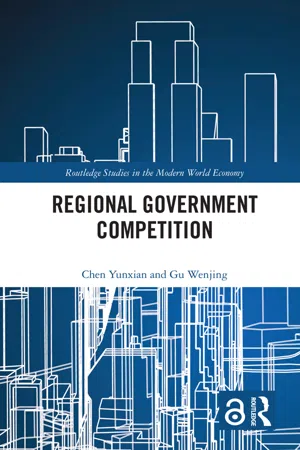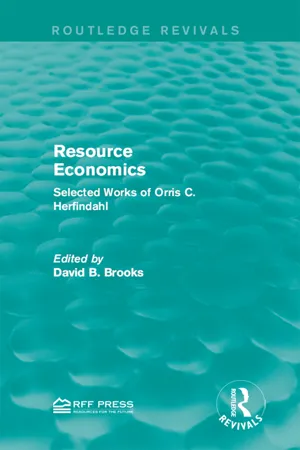Economics
How Markets Allocate Resources
"How Markets Allocate Resources" refers to the process by which goods and services are distributed in an economy. In a market economy, resources are allocated based on the interaction of supply and demand, with prices serving as signals for resource allocation. This system allows for efficient allocation of resources based on consumer preferences and producer incentives.
Written by Perlego with AI-assistance
Related key terms
10 Key excerpts on "How Markets Allocate Resources"
- eBook - ePub
Economics For Dummies
Book + Chapter Quizzes Online
- Sean Masaki Flynn(Author)
- 2023(Publication Date)
- For Dummies(Publisher)
market production to capture what happens when one individual offers to make or sell something to another individual at a price agreeable to both.In markets, the allocation of resources is facilitated by the fact that each resource has a price, and whoever is willing to pay the price gets the resource. In fact, market economies are often called price systems because prices serve as the signals that direct resources. Holding supply constant, products in high demand have high prices, and products in low demand have low prices. Because businesses like to make money, they follow the price signals and produce more of what has a high price and less of what has a low price. In this way, markets tend to take limited resources and use them to produce what people most want — or at least, what people are most willing to pay for.For instance, the guy who sells you a TV at a local retailer has no idea about the total demand for TVs in the world, how many tons of steel or plastic are needed to produce them, or how many other things weren’t produced because the steel and plastic needed to make the TVs were used for TVs rather than other things. All he knows is that you’re willing to pay him for a TV. And if he’s making a profit selling TVs, he orders more TVs from the factory. The factory, in turn, increases production, taking resources away from the production of other things.Markets have the benefit of figuring out, automatically, the things people want. To grasp why this is so amazing, consider that you live in a world of more than 8 billion people. It would be impossible for any single person to gather enough information to figure out what each of them most wants to buy. It would take several lifetimes to speak with each of them, even just to find out what they want for dinner, let alone all the other things they would most like to purchase on a typical day. But because production and distribution in modern economies aren’t centrally controlled (by a small number of government officials working together in a single place), nobody needs to know the big picture. - eBook - ePub
The Economy as a System of Power
Corporate Powers
- Warren Samuels(Author)
- 2017(Publication Date)
- Routledge(Publisher)
It should be noted that in advocating that political economy as dynamic valuation must confront the notion of progress in meaningful terms, we are not suggesting that there is no natural division of labor between economists and philosophers in approaching value. It seems consistent with the present position to argue that economists can continue to shunt off onto philosophers the more abstruse elements of the value controversy as it affects, for example, the debate over what constitutes the good life. If, however, we accept that resource allocation is the heart of economics, then economists need to confront all the value elements that bear directly on this central problem. So viewed, economics never has been “mere allocation,” that is, concerned only with resource allocation via prices in markets.Conclusions It is perhaps possible to summarize the essential argument in a few propositions.(1) Economics always has recognized that its distinctive emphasis has been on the need to make choices in a world where the energy crisis is only the most recent reminder that affluence has yet to replace scarcity as a basic conditioner of human existence.(2) While economics, therefore, indubitably revolves about allocation, it is pre-eminently a science of valuation. To say this is to say something more specific than the philosopher’s more cosmic concern with the ultimate destiny of man, but less specific than, say, Lionel Robbins’s definition of economics would imply. Economic theory, in which market imperfections are noted, but values are assumed given, even when termed only “benchmark theory,” is inadequate theory to cope with the economic problem.42(3) Ayres well may have erred in his view of the meaning of modern market equilibria, but he surely was supremely correct in arguing that the central concern of economics is not How Markets Allocate Resources, but rather how the total allocative thrust of the economy is perceived, determined, reviewed, transmitted, and altered over time.(4) Economics long has given in to the tendency, therefore, to convert what is essentially a complex value problem into a relatively simple and often mechanistic allocative problem because of the advantages of the latter in developing precise and rigorous models. But this effort has produced schizophrenia which has become ever more pronounced. The disproportionate attention given to theoretical apparatus which concentrated on simplistic allocation while the economy itself wrestled with valuation increasingly is being recognized. Perusal of any basic text will underscore this discrepancy between the complexity of our apparatus to deal with “markets” and the paucity of our apparatus to deal with value (in static terms) or progress (in dynamic terms). - eBook - ePub
Environmental and Natural Resources Economics
Theory, Policy, and the Sustainable Society
- Steven Hackett, Sahan T. M. Dissanayake(Authors)
- 2014(Publication Date)
- Routledge(Publisher)
The sum of consumer and producer surplus in a market. Now we are going to develop the important concept of a well-functioning competitive market being efficient. In the context of market analysis, resources are efficiency allocated when the welfare of the market participants (as measured by total surplus) is maximized. In other words, resources are efficiently allocated when market participants receive the maximum possible gains from trade. Resources are efficiently allocated at the equilibrium market price because in a well-functioning competitive market there is neither excess supply nor excess demand, and so there are neither too many nor too few units of the good or service produced. If price were above the equilibrium level, we would have excess supply, and so the amount actually traded (equal to quantity demanded) would be less than the quantity traded at the equilibrium price, thereby reducing total surplus. If price were below the equilibrium level, we would have excess demand (also known as a shortage), and so the amount traded (equal to quantity supplied) would be less than the quantity traded at the equilibrium price, thereby reducing total gains from trade (total surplus). As a result, when there is either excess supply or excess demand, some mutually satisfactory transactions, which would have generated consumer and producer surplus, are prevented from occurring, which is why nonequilibrium prices are inefficient. While there is a tendency to ignore the functioning of markets, or to take them for granted, Hayek (1937, 1945) focused attention on the fact that the price system in competitive markets provides a unique means of conveying and exploiting information - eBook - ePub
Construction Economics
A New Approach
- Danny Myers(Author)
- 2022(Publication Date)
- Routledge(Publisher)
We also began to recognise that the forces of supply and demand are closely associated with this mechanism. This was highlighted in Figure 2.2. To interpret market signals perceptively – whether in the construction industry, building materials sector, property market or whatever – it is necessary to consider the price mechanism in more detail. We now begin to elaborate our understanding of the price mechanism. We can define it more fully as: an economic system in which relative prices are constantly changing to reflect changes in supply and demand for different goods and services. The price mechanism is synonymous with the term market mechanism. The forces of supply and demand are all encompassing within the market economy. Even before any good or service can be produced, the various factors of production need to be employed and their prices are affected by supply and demand. The forces of supply and demand bring together producers and consumers in such a way that appropriate goods and services are produced and appropriate incomes are rewarded. To highlight this interrelationship between supply and demand in different markets, we first consider an overview of a market-based economy. ALLOCATION IN A MARKET ECONOMY Figure 3.1 (see page 48) displays how the wishes of producers and consumers are ‘signalled’ by the price mechanism. To begin with factor markets : households (consumers) supply economic resources (factors of production) to firms that demand them to undertake productive activity. This is shown in the top half of Figure 3.1. The supply and demand of these factors (resources) determine the prices paid for them in the particular sector in which they are put to economic use - eBook - ePub
- John H Hoag(Author)
- 2012(Publication Date)
- WSPC(Publisher)
In this section, we have developed the ideas of consumer and producer surplus as well as the idea that price is a measure of the value of a good to the consumer and that marginal cost measures the value of the resources that go into the production of the good. Based on these definitions, we will develop a criterion for how resources should be allocated. That is the next task.7.3 How Should Resources Be Allocated?In this section, we will look at an idea for how to evaluate an allocation of resources. We will do this based on the definitions and concepts we have just developed, but we will need to do so within the confines of a model. Hence, we start with some assumptions.Assumptions 7.7:a. There are two goods, X and .b. We know the price of each of the goods, Px and Py , respectively.c. We know the MSC of each good, MSCx and MSCy .d. There is a limited amount of resources to spend on the production of X and .e. There are no unemployed resources.f. Inputs and outputs are infinitely divisible.g. Either there are no externalities in consumption or production or the externalities are properly paid for.The question is whether we should take resources out of the production of one good and place them into the production of the other good. Suppose we have two goods, spaghetti and linguini (only talking about the noodles). If the amount of resources needed to produce one pound of spaghetti is the same as the amount of resources needed to produce one pound of linguini, then we could reduce spaghetti production by a pound and lose the value to society measured by the price of spaghetti. We could then take the freed-up resources from the spaghetti and use them to make linguini. The society gains a value equal to the price of linguini. If the price of linguini is greater than the price of spaghetti, then we gain more than we gave up, and the society is better off. But what if the quantity of resources needed to produce one unit of a good is not the same as the quantity of resources needed to produce one unit of the other good? What do we do then?There are a couple of options. Suppose we are producing Jaguars and yo-yos. One approach is to produce one fewer of the Jaguars so the society loses value equal to the value of the Jaguar. We take the resources from that one Jaguar and produce as many yo-yos as possible, and then the value we gain is the price of yo-yos times the number of additional yo-yos produced. A second way is to take a dollar’s worth of resources from the production of the Jaguar and we would lose some small amount of value from the tiny portion of the Jaguar that was not produced, but we would take the resources and produce as many more yo-yos as possible. The society would gain the price of the yo-yos times the number of added yo-yos produced. While the two approaches are very similar, they differ in how the quantity of resources we trade is determined. We will follow the second method. - eBook - ePub
- Peter Antonioni, Sean Masaki Flynn(Authors)
- 2010(Publication Date)
- For Dummies(Publisher)
Markets also have the benefit of working out, automatically, the things that people want. To grasp why this is so amazing, consider that we live in a world of nearly seven billion people. It would be very hard for any one person to gather enough information to figure out what each of those nearly seven billion people most wants to buy. Several lifetimes would be needed to speak with each of them, even just to find out what they want for dinner, let alone all the other things they may most like to purchase on a typical day.But because production and distribution in modern economies aren’t centralised, you don’t need to know the big picture. In fact, the real magic of market economies is that they are just a collection of millions and billions of small face-to-face transactions between buyers and sellers.For example, the person who sells you a TV at the local store has no idea about the total demand for TVs in the world, how many tons of steel or plastic are needed to produce them, or how many other thingsweren’tproduced because the steel and plastic needed to make the TVs were used for TVs rather than other things. All they know is that you’re willing to pay them for a TV. And if they’re making a profit selling TVs, they will take account of the greater potential sales by ordering more TVs from the factory. The factory, in turn, increases production, taking resources away from the production of other things. Reallocation of resources also occurs in markets because each resource has a price, and whoever is willing to pay the price gets the resource.In fact, market economies are often called price systemsbecause prices serve as the signals that allocate resources. Things in high demand have high prices, and things in low demand have low prices. Because businesses like to make money, they follow the price signals and produce more of what has a high price and less of what has a low price. In this way, markets tend to take our limited resources and use them to produce what people most want – or, at least, what people are most willing to pay for. And they do it all in a completely decentralised manner.Communism, long lines and toilet paperIn a command economyall economic activity is done on the orders of the government. Until the fall of the Berlin Wall and the subsequent collapse of communism in the late 1980s and early 1990s, a large part of the world’s population lived in countries that had command economies. Sadly, they didn’t live very well. - eBook - ePub
A Primer on Microeconomics, Second Edition, Volume I
Fundamentals of Exchange
- Thomas M. Beveridge(Author)
- 2018(Publication Date)
- Business Expert Press(Publisher)
Spontaneous order occurs when individuals adjust their actions to signals they observe around them. As you walk across campus, you do not continually collide with those around you. Through observation, body language, and judgment, you can navigate your course safely and effectively. The same behavior is seen in supermarkets—all of the checkout lines at a given time will have a similar number of customers. If a new line is opened, customers will flow toward this new opportunity, but not in limitless numbers. The lines will adjust quickly and again become equal in length. Order is spontaneously restored. Similarly, in the economy, when a new opportunity or challenge opens up, markets operate in a spontaneous but orderly manner to adapt to the new circumstances, reallocating resources and adjusting production.Markets bestow information and incentives. Price, the main signal used in markets, offers information to participants. When the price of a good increases, entrepreneurs are stimulated to make greater efforts to increase production while buyers cast around for other less pricey alternatives. If the price of a resource increases, we would expect suppliers to offer more of it, but we would also expect to see users become more sparing in its use.Markets incentivize producers to sell at the highest price they can receive, but encourage buyers to seek out the lowest price they can find. Firms constantly search for cheaper, more efficient, resources and methods of production while being alert to spontaneous changes in the tastes and preferences of consumers. In resource markets, resources flow to the activity that affords them the highest reward—usually, the activity in which they are the most productive.Resource markets ration our scarce inputs, moving them from low-valued - eBook - ePub
- Chen Yunxian, Gu Wenjing(Authors)
- 2018(Publication Date)
- Routledge(Publisher)
3Resource allocation in “the four phases”Regional government competition, which is achieved through the effective allocation of regional resource factors, can be interpreted in both the broad and narrow sense. The former covers competition in the allocation of total factors, i.e. operational resources, non-operational resources and quasi-operational resources, while the latter tends to take place in the structural adjustment and effective allocation of quasi-operational resources.The realization of corporate profits and the growth of regional income are both issues of input and output and cannot do without the investment and allocation of resources, but the ways that resources are defined and allocated have become dynamic processes of constant adjustment and change. On the one hand, the concept of resources has transitioned from traditional physical resources to the expanding scope of intangible resources. On the other hand, the dominant factors affecting their allocation are constantly shifting from simple factors to total factors such as technology and innovation. Porter (1990) points out that a country’s economic development undergoes four phases, which are characterized as factor-driven, investment-driven, innovation-driven and wealth-driven. From the perspective of the development of global economies, the resource allocation pattern of regional government has also experienced dynamic changes from factor-driven, investment-driven, innovation-driven and to wealth-driven. The policy eco-environment of regional government may vary with these phases, and so will the resource allocation means depending on the particular time given, so regional government must effectively judge the core driving force of economic growth over a given period of time and adopt a series of resources allocation means to guide the ecology of policy. - eBook - ePub
Resource Economics
Selected Works of Orris C. Herfindahl
- David B. Brooks(Author)
- 2015(Publication Date)
- Routledge(Publisher)
In alleged opposition to these two general propositions, Sargent maintains that reliance on the market mechanism has made a mess of our use of natural resources (pollution, abuse, etc.) and that only the resource economist understands that allocation of natural resources to different uses must be accomplished through the political process. But surely to view the market system as the main allocation instrument in our society and a market system as having certain advantages over other systems does not entail the view that the market will solve all problems.What is the situation in the “natural resource industries”? The fact is the market does perform the allocative function quite well in a number of them, subject to the legal restrictions (not all of which are undesirable) that have been imposed, including agriculture, forestry, and mining. Perhaps the main test of performance here is whether investment and output respond to changes in demand in response to changes in profits from “normal” levels.Any “market” economist would agree with Sargent that pursuit of self-interest will yield less than desirable and attainable results in many cases, including many involving natural resources. Market-oriented economists have known for years that the presence of real external benefits and/or costs will result in misallocation in certain cases. To blame the market system for these misallocations is like blaming penicillin for failing to mend a broken leg when prescribed instead of a cast.What is to be done about these cases? To say that the political process can solve all is too loose a prescription. The political process functions in many different ways, depending on the conditions that are set up for its functioning in the case at hand. The questions are: Who is going to participate in the process and how? What is the system? What are the rules for resolving conflicts in resource use?At this point one ignores the market economist at his own peril. Demand for some of these commodities can be studied and estimated, contrary to Sargent’s assertion. More important, it may be possible to suggest procedures that will enable us to reap some of the good results of reliance on market forces, such as adjusting supplies to willingness to pay, while avoiding some of the bad. Many “political” choices can be aided by quantifying costs and benefits, in some cases for different levels of “product” quality. - eBook - ePub
- Cynthia Metcalf, Rhonda Atkinson, Rhonda Atkinson(Authors)
- 2017(Publication Date)
- Research & Education Association(Publisher)
Most contemporary definitions of economics involve the notions of choice and scarcity and their relationship to one another. Perhaps the earliest of these is by Lionel Robbins in 1935: “Economics is a science which studies human behavior as a relationship between ends and scarce means which have alternative uses.” Virtually all textbooks have definitions that are derived from this definition, though the exact wording differs from author to author.The standard definition of economics is something like this: “Economics is the social science that examines how people choose to use limited or scarce resources to obtain maximum satisfaction of unlimited wants.”Macroeconomics is the study of the economy as a whole and includes topics such as inflation, unemployment, and economic growth. Microeconomics is the study of the individual parts (e.g., households, business firms, and government agencies) that make up the economy. It particularly emphasizes both how these units make decisions and the consequences of these decisions.COMPETENCY 2.1Analyze how scarcity and opportunity cost influence choices about how to allocate resources.Economists believe that human wants are unlimited while the resources to satisfy those needs are limited. Consequently, society is never able to produce enough goods and services to satisfy everybody, or almost anyone, completely. Alternatively, resources are scarce relative to human needs and desires. When resources are limited, the limitation affects prices (the amount of money needed to buy goods, services, or resources). Scarcity
Index pages curate the most relevant extracts from our library of academic textbooks. They’ve been created using an in-house natural language model (NLM), each adding context and meaning to key research topics.
